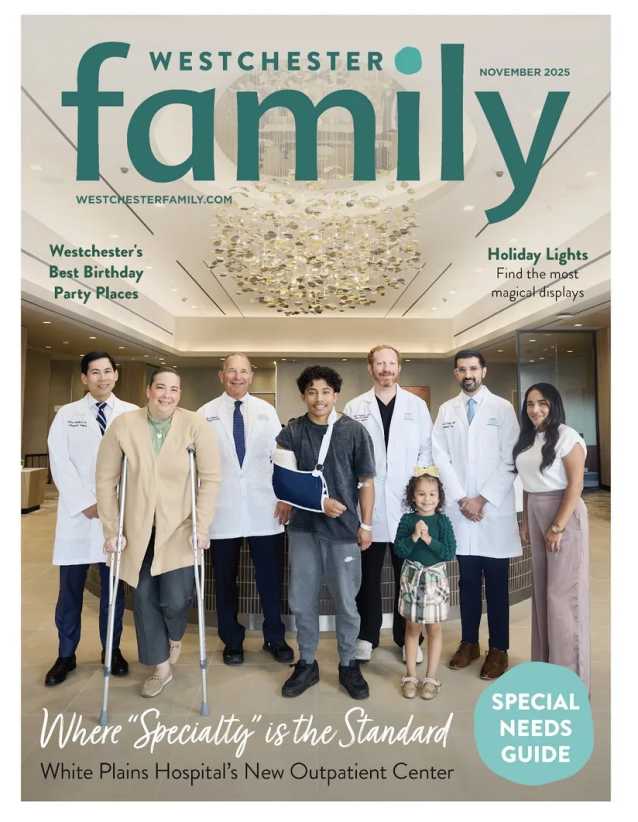Each time a child is run over and killed in a driveway, it is a tragedy. Whenever I read about it, like most people, my heart breaks, I cringe, and wonder how the family members of the precious child manage to move on with their lives.
Driveway backovers are all too common in suburban America, and New York is no exception. Yes, it happens here. And it keeps happening here, as well as throughout the country.
Fifty children are backed over each week in the United States, according to KidsandCars.org, a national Kansas-based organization dedicated to preventing injuries and death to children in and around motor vehicles.
“A young child does not possess the cognitive ability to know daddy can’t see him,” says Janette Fennell, the group’s founder and president. “People need to grab onto [the fact] that they literally can’t avoid hitting something [they] can’t see.”
With sport utility vehicles and mini vans seemingly getting bigger and bigger — statistics show that the bigger they are, the larger the blind zone.
With most big cars, the average blind zone is 7- to 8-feet wide and 20- to 30-feet long. Good Morning America tested the span of the blind zone and found that 24 toddlers could be behind a car at the same time, completely undetected. Fennell finds it paradoxical that most people would not buy a car if they could not see 20- or 30-feet in front, but would drive a vehicle with such a large rear blind zone.
Case studies
At one point or another in our lives’, we’ve all had a toddler give us the slip in a store or public place, while being momentarily distracted. There’s a different danger when a toddler wanders near a car.
In 2002, 2-year-old Cameron Gulbransen was killed when his father accidentally ran him over as he backed out of his driveway in Syosset. Dr. Greg Gulbransen, a pediatrician, checked his mirrors and turned to look over his shoulder, but still could not see his son, whom Gulbransen thought was sleeping, but had left the house unbeknownst to his parents.
In 2004, Bill Nelson and Adriann Rashdorf-Nelson, of Dix Hills, Long Island, lost their son, Alex, when he was backed over by a relative.
“It is every parent’s nightmare to see their child die,” says Nelson. When asked how he deals with people who blame the parents and-or the driver for the child’s death, he calmly indicates “it is human nature to place blame on someone because [of the fear] that it will happen to you.” He tries not to second guess the choices that were made that day.
“We are not calling these accidents anymore,” says Rashdorf-Nelson. “Children are impulsive.”
The Nelsons created their own website, alecsrunli.com, and hold an annual run in their son’s memory, which attracts almost one thousand participants and spectators each year. The Nelsons also used money they raised to build the Alec William Nelson Memorial Playground in Huntington Station.
Accidents like these even happen to people fully aware of this type of danger.
In 2005, Susan Auriemma, the co-chair of the Coalition for Safer Manhasset — a group who’s mission it is to make the town safer for pedestrians — checked to ensure that no one was behind her car before she put it in reverse and began to back out of her driveway. That’s when she heard a scream. She immediately stopped the car, and ran around to find her daughter, Kate. In the split second after she had checked behind her vehicle, Kate, who miraculously survived, had gotten away from the babysitter and out of the house and placed herself right in the blind zone.
Auriemma believes that redundant layers of safety will keep children safer. She recommends keeping vigilant, utilizing available technology, and educating parents and children alike about the dangers of moving vehicles. She believes people need to understand that it is not just about supervision, but about the issue of rear visibility.
New legislation
After looking at the list of driveway backovers, I noticed the seemingly higher rate of occurrences on Long Island. Auriemma agreed that it is a serious problem.
Several significant laws have come out of these tragedies. Alec’s Law, first passed in Suffolk County in 2006 and then in Nassau County shortly thereafter, requires that the county government have a website on which it posts child safety information in relation to SUVs, and requires car dealers to distribute pamphlets with such information.
The Nassau County website is not currently running. According to Legislator Wayne Wink’s office, there have been technical difficulties and he will continue to follow up.
In February of 2008, after a little more than three years of work by dedicated safety advocates, President Bush signed the Cameron Gulbransen Kids Transportation Safety Act of 2007, which will require safety technology that expands the driver’s field of view be standard in all cars by Feb. 28, 2014. The act will also require the Secretary of Transportation to provide the public with information about the danger to children in regards to cars in a non-crash, non-traffic situation. But, until the Department of Transportation has completed its work in this area, there are no new rearview safety requirements.
Protect yourself
There are quite a few ways in which you can protect your and other people’s children.
Backup cameras come standard in many high-end model cars. For those who do not already have one, a backup camera, costing less than $100 or a “rear view safety lens” costing about $20, are available online, But safety specialists stress that this technology does not take the place of getting out and walking around your vehicle.
Teach your child that a parked car might move and the driver might not be able to see him, to never play near vehicles and keep the toys and sports equipment off of the driveway.
Many people feel so terrible when hearing about the loss of these children, but can do something very simple to help others: they can talk about this with friends and neighbors to raise their awareness. People need reminding, and advocates like Fennell, the Nelsons, and Auriemma are making great efforts to save lives by sharing their information with others.
You can join their ranks.
For more information, visit www.KidsandCars.org and the National Highway Traffic Safety Administration’s web page, “Keeping Our Kids Safe.”
Risa C. Doherty is an attorney and freelance writer from Roslyn, New York.
























